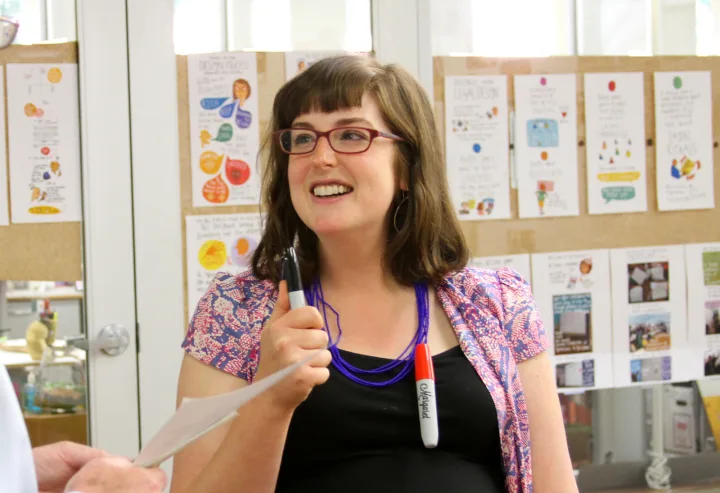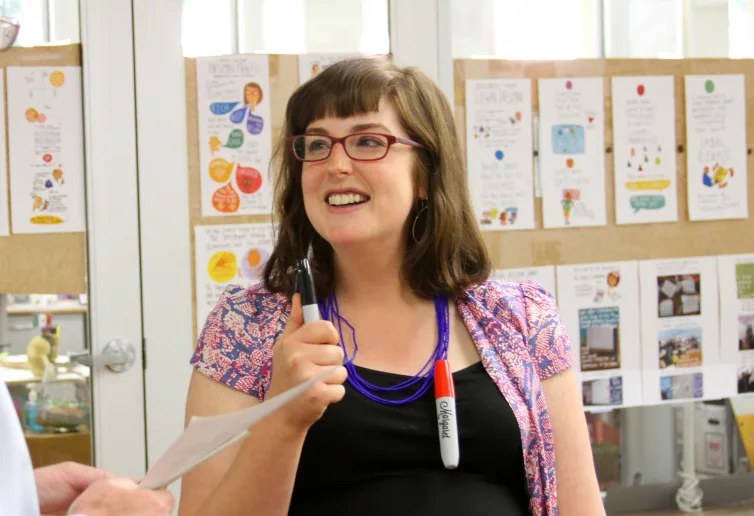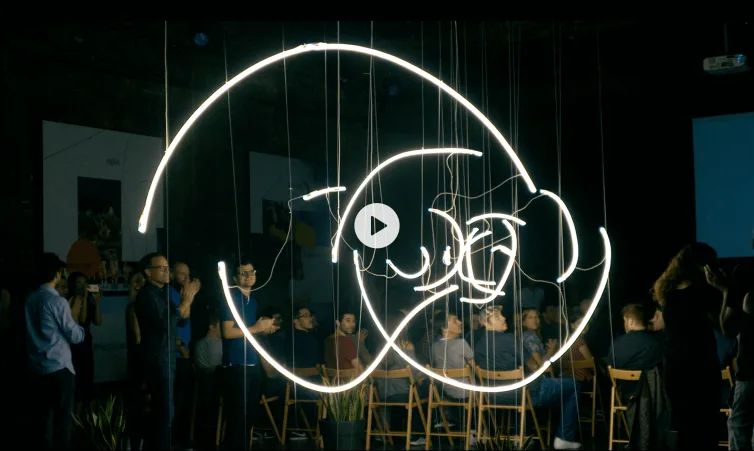“There’s this glaring absence of user experience in law. Whether it’s the layperson or the seasoned lawyer, so many people are miserable in law and no one is thinking about the actual experience or the human part of it.”
Margaret Hagan is a fellow at Stanford Law’s Center on the Legal Profession and a lecturer at Stanford Institute of Design (the d.school). She’s also founder of the Open Law Lab, “a movement to make the law more accessible, more usable, and more engaging.” It’s a gorgeous day in Mountain View and we’re meeting to talk about her work in humanizing the legal experience through design. Her son Kerem is with her and she believes that, one day, he will thrive in a design-centered world.
Margaret always loved to draw, but one day she “grew up”, attended law school, and briefly lost her connection to creativity.
I’m reminded of Picasso: “Every child is an artist. The problem is how to remain an artist once one grows up.”
Latest posts on Human Experience
Here’s Margaret.
I knew visual was key for me learning, communicating, and getting anybody to care about what I cared about. I’d love to be a cartoonist. Put a picture on it and you know you’ll get some eyeballs on it.
I came to law school with an analytical mindset—just consume information, memorize information, spit information back out. I didn’t feel like I had any place in it.
I finished my PhD which was, again, purely analytical writing, and no one cared. I could’ve written 500 pages, and I did, but no one’s ever going to read it. That’s when I decided to get my creativity out of the closet.
Margaret then met her future husband who was working on his PhD in Design at Stanford.
I was reading his thesis at the time and I began seeing everything through that lens of how things could be better. How can we intervene? How can we come into the system and make the experience better?
I think that’s what saved me. Otherwise I don’t think I would’ve survived the law school experience.
The legal experience
Someday you’ll experience the legal system. It’s hard to avoid—law is everywhere. Although criminal law gets the majority of media airtime, there are over 100 areas of law including:
Administrative law
Admiralty law (or maritime law)
Advertising law
Agency law
Alcohol law
Alternative dispute resolution
Animal law
Antitrust law (or competition law)
Appellate practice
Art law (or art and culture law)
Aviation law
Banking law
Bankruptcy law (creditor debtor rights law or insolvency and reorganization law)
Bioethics
Bird law
Business law (or commercial law); also commercial litigation
Business organizations law (or companies law)
And that’s just the As and the Bs.
Think about this. The entire legal system exists to enforce human behavior and ensure that everybody plays fair. It’s unavoidable.
If you’ve ever filed a fee waiver in your divorce, set up an LLC, or purchased your first home, or had any kind of legal interaction, here’s my question for you:
Was it easy to get started? Did you have all the information you needed to get the job done right? Did you make any mistakes, and what did it cost you in the end? Perhaps you had to redraft or re-submit legal documents after two or three failed attempts.
How did you come away from that experience? Did you walk away more knowledgeable? Did you feel more empowered? Did you feel like the system was helpful?
And if you’re an attorney, how is your everyday experience?
Do you enjoy preparing legal briefs and other court documents? Do you generally enjoy the clients you work with? Have you ever suspected a judge who is hearing your case of having a serious bias? Have you ever felt you’re working within a system that is designed to work against the very clients you’re serving?
There will be some attorneys who love what they do regardless of their workload. There will be some who relish a complex system that keeps people off balance, because it keeps them in power positions. And there will be some who try to protect others from the negative effects of an unfriendly, and sometimes unforgiving, system.
UX in law
According to Margaret, many professionals within the legal system agree that the “user experience” is poor. This feedback comes from judges, attorneys, court clerks, and of course, citizens. Feelings of disempowerment, frustration and helplessness are the norm for many who pass through the doors of justice each day. For some, it almost gets engraved on their tombstones when they die.
Margaret believes this can change using a human-centered design approach, as championed by IDEO. She explains:
I like to focus on functional needs and experiential needs. Functional needs are usually the ones that are the most obvious, like when you need money to pay a fine or a form to fill out. Anything that gets you from A to B: functional needs.
Experiential needs are really logistic things for designers. What kind of person does this person want to be? Do they want to be happy? Do they want to be in charge? What are their aspirations? What are their values? What are their core needs?
The context, this process, all the things that are going into the experience that we’re giving them … that’s where the magic really lies.
If you can make that person feel like their aspirational self, it can make up for a lot of other things that are bad with your system.
Margaret pauses for a moment, and continues.
Another concept, if it’s not too jargony, are touch points. I end up using this all the time with courts. How can we offer those experiential factors and invite participation from the user?
When we think of a café, there’s lots of touch points. They offer us menus, they offer people to serve us…
How do we make the legal experience richer with touch points so people can follow along really easily so their next course of action is clear? Or an experience that helps them feel like they’re being guided along in a choreographed way and not just tossed through a random maze?
I thought about my own experience as a social worker, sitting in juvenile court, waiting for my clients to arrive. I remember guiding and educating parents. I assisted new social work staff so they weren’t overwhelmed. If it’s intimidating for adults, imagine how an inexperienced teenager feels.
I recalled my experience as a juror, and the time I was a witness to a case where my testimony would determine whether or not someone went to jail. I found myself on the other side too, trying to talk my way out of a ticket and feeling a sense of shame in the process.
There’s nothing intuitive about the legal experience. You either have some inside knowledge on what’s going on, or you’re winging it, and hoping everything goes well.
Margaret once blogged about how progressive the UK was when it came to redesigning their legal system. I asked her about it.
In the UK, they had a major commission. I think it came from the House of Lords. It was from the top down like, “We need to change access to justice. We’re in crisis, people are not getting served.”
The UK is ahead of the US in terms of bringing design thinking into government and policy agencies. They’ve already changed their legal system so much to make it easier for non-lawyers to practice, and they’re much more experimental.
They let non-lawyers own legal businesses so that you don’t have these big law partnerships. You could have an affordable lawyer who costs little because it’s run from a corporation and not a partnership.
Moving forward
Since Margaret published the Open Law Lab, she’s seen tremendous interest in her ideas and feels emboldened going forward. I asked about her biggest takeaway so far and the future of her work.
The system has changed! That’s my biggest takeaway.
Judges have enormous power to change the rules and change the court and change things. It’s humans who are at the center of these systems. The systems don’t exist in a vacuum.
I think the blog and other things are great ways to bring open-minded judges together and get their ear. So many judges know the system is broken and want new ideas.
I ask Margaret about her long-term vision, and she pauses for a moment.
I’d love to see major change in how courts are run. I’d love to see little experimental labs set up inside all of these traditional legal organizations, from law firms, to legal aid, to courts.
I want to see new professions for people who want to go into law but don’t necessarily want to be the corporate lawyer or the prosecutor, but want to really change how legal services are provided and make them dramatically more open and more usable.
I see myself as a person who’s bringing the community together and being a touch point. I love teaching. I love working with students to figure out what a good track would look like for them. I can see myself trying to launch all these students along these paths.
I think converting the talk into action is my key goal.
Validation is an important concept in Margaret’s eyes. It signals that people are responsive to your ideas and that you’re not the ONLY crazy one. She didn’t expect the blog to catch on so fast which was eye-opening for her.
Margaret continues to teach at Stanford’s d.school and now has a cohesive team of developers and designers that work on apps. She meets regularly with professionals, in and out of law, to start tackling the systemic issues that plague legal systems all over the world.
The small changes she’s witnessed so far make her optimistic. She’s hopeful more people will take up the mantle of designing better legal experiences.
Will UX design ultimately help create a better legal system? Why not?
You can find Margaret’s work at Open Law Lab and Legal Tech Design.







